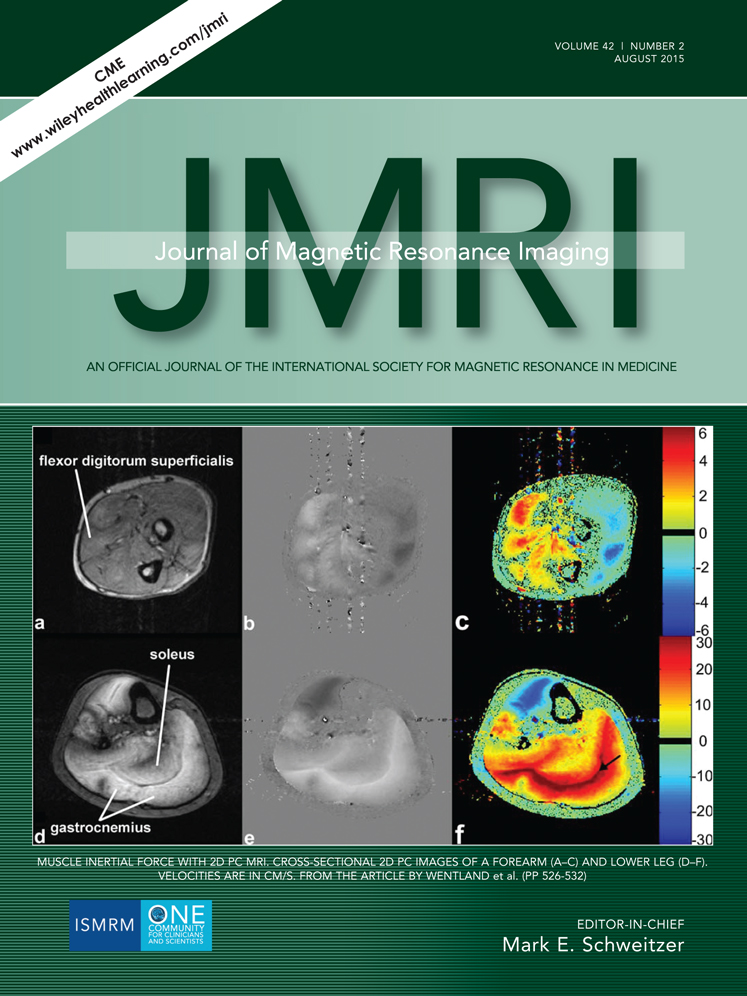Influence of image registration on apparent diffusion coefficient images computed from free-breathing diffusion MR images of the abdomen
Abstract
Background
To evaluate the influence of image registration on apparent diffusion coefficient (ADC) images obtained from abdominal free-breathing diffusion-weighted MR images (DW-MRIs).
Methods
A comprehensive pipeline based on automatic three-dimensional nonrigid image registrations is developed to compensate for misalignments in DW-MRI datasets obtained from five healthy subjects scanned twice. Motion is corrected both within each image and between images in a time series. ADC distributions are compared with and without registration in two abdominal volumes of interest (VOIs). The effects of interpolations and Gaussian blurring as alternative strategies to reduce motion artifacts are also investigated.
Results
Among the four considered scenarios (no processing, interpolation, blurring and registration), registration yields the best alignment scores. Median ADCs vary according to the chosen scenario: for the considered datasets, ADCs obtained without processing are 30% higher than with registration. Registration improves voxelwise reproducibility at least by a factor of 2 and decreases uncertainty (Fréchet-Cramér-Rao lower bound). Registration provides similar improvements in reproducibility and uncertainty as acquiring four times more data.
Conclusion
Patient motion during image acquisition leads to misaligned DW-MRIs and inaccurate ADCs, which can be addressed using automatic registration. J. Magn. Reson. Imaging 2015;42:315–330.




